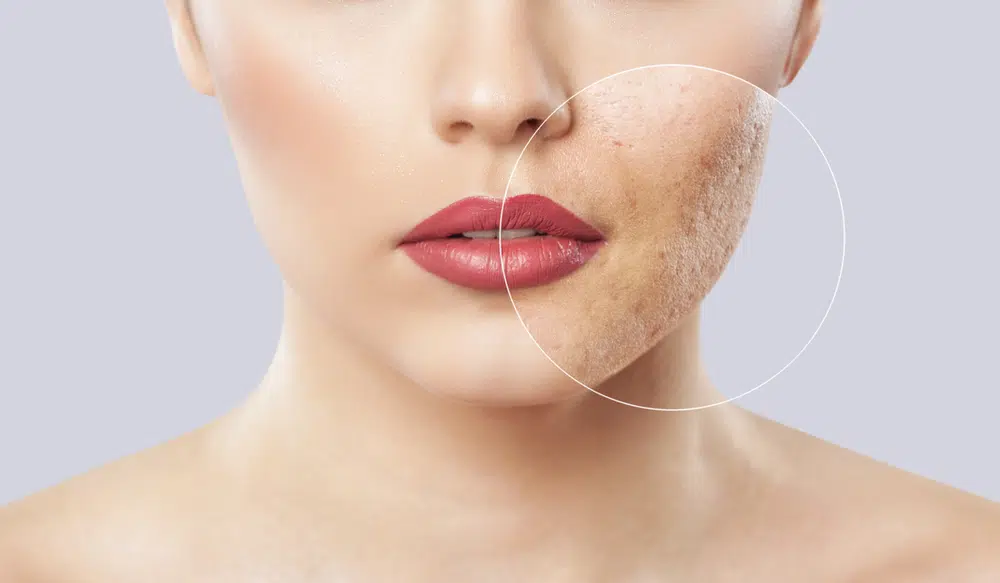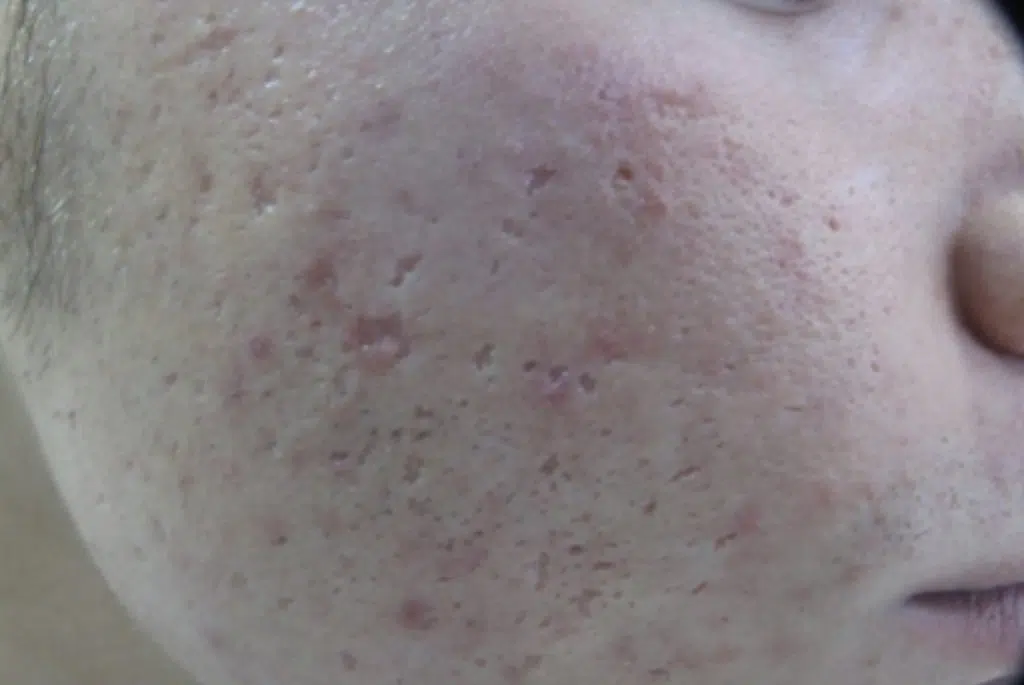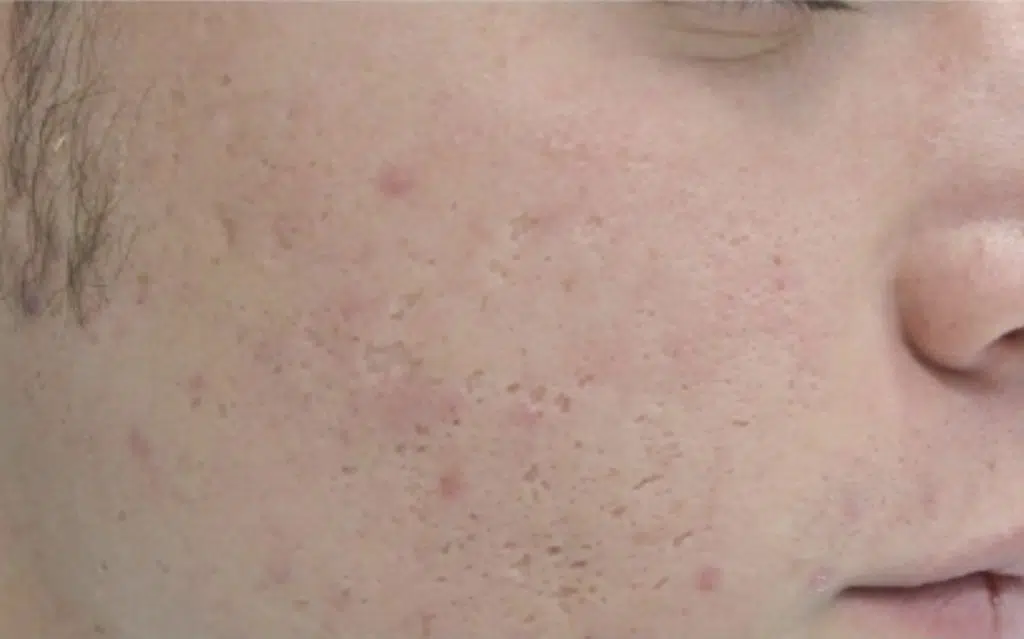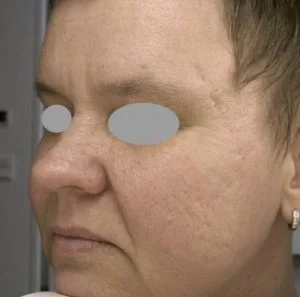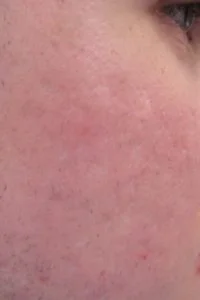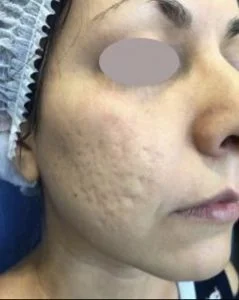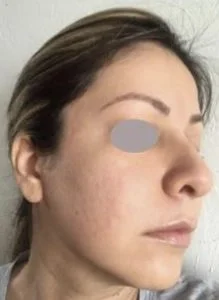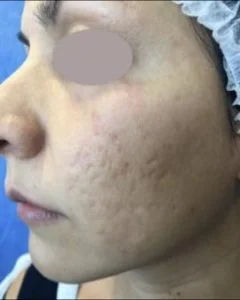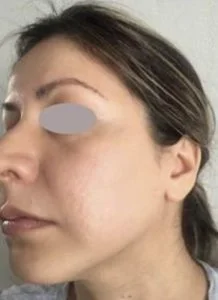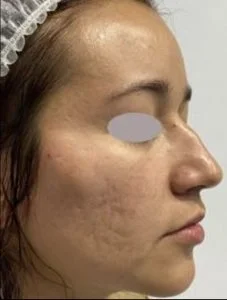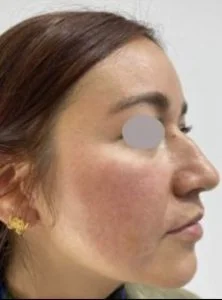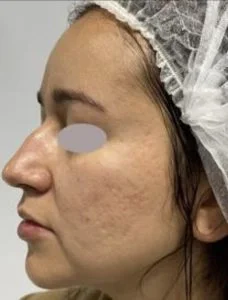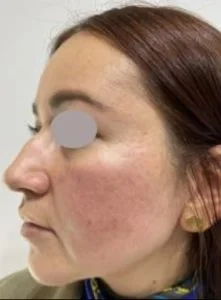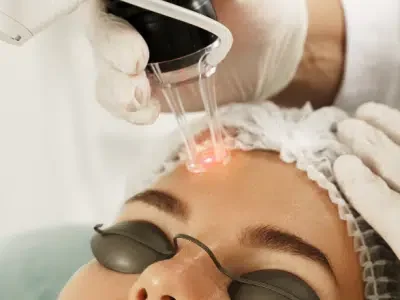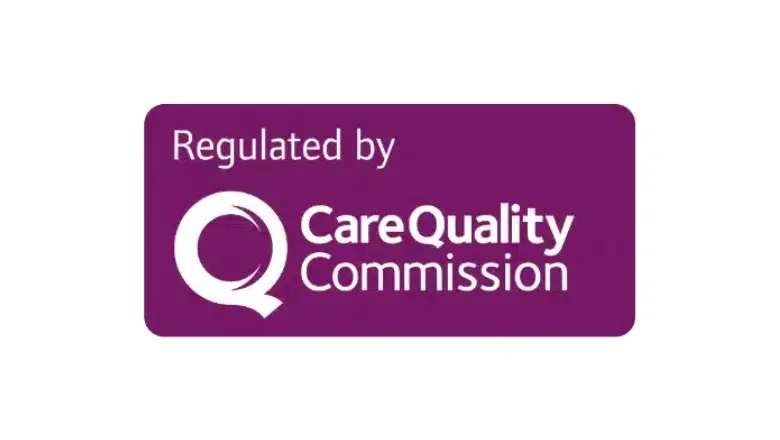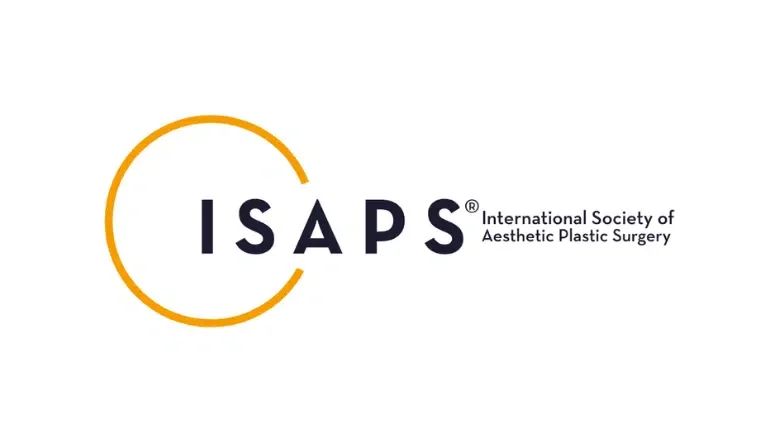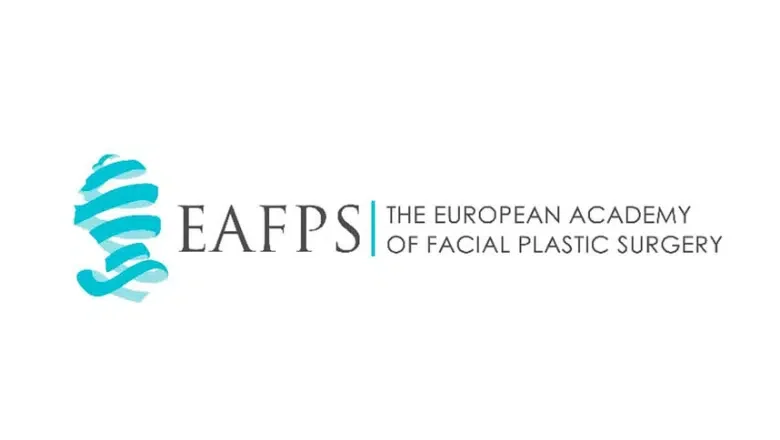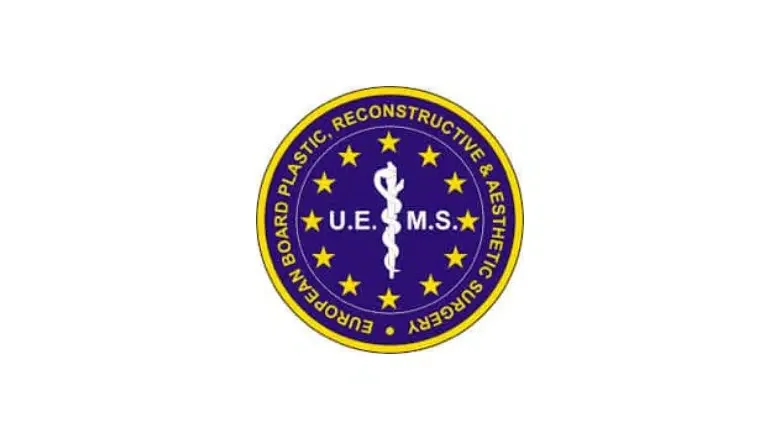Acne scar removal in London
Acne has a prevalence of over 90% among adolescents and commonly persists into adulthood in approximately 12 to 14% of all cases. The face, back and chest are the most commonly affected areas and areas of inflammatory acne can lead to the development of permanent acne scars, the severity of which often depends on delays in treating acne patients. Nearly 1% of the UK general population have acne scars of varying severity. Severe acne scarring, in particular, is associated with a significant impact on mental health and well-being, especially in younger adolescents.
Centre for Surgery is recognised as a centre of excellence in the expert management of acne scar removal of all grades of severity. Our specialists teach and lecture international doctors widely on the best acne scarring techniques. Our dermatologists are experts in the use of laser resurfacing and Morpheus8 fractional RF microneedling for effective treatment of acne scarring and acne scar removal. At our specialist acne scar removal clinic in central London, our doctors have access to both fractional and fully ablative laser resurfacing, often used in combination with manual methods to achieve the very best outcomes following acne scar treatment. Unlike other clinics, we use only the most powerful surgical-grade lasers, including both erbium lasers and CO2 lasers. We are also an expert centre in the use of RF micro-needling, also known as Morpheus8, for the treatment of more profound and fibrotic types of acne scars resistant to other types of treatment.
The key to successful treatment of a difficult condition such as acne scarring consists of using only state-of-the-art technology performed in a CQC-approved medical environment by fully accredited and experienced dermatologists. Our dermatologists are experts in the use of high-power surgical-grade lasers. These lasers are commonly found in only a handful of specialist NHS units nationwide as they are very expensive devices, often costing more than £100,000. These devices have the power to penetrate deeper than most aesthetic grade lasers commonly found in a local high street medispa. Our philosophy is to focus on results-driven treatment underpinned by the latest treatment protocols so that our patients get the best outcomes.
In addition to laser resurfacing and RF microneedling, our dermatologists use a number of complementary manual techniques to enhance the results of treatment, including:
- Subcision using the most advanced tumescent technique for full-field subcision
- TCA CROSS, also known as Chemical Reconstruction Of Skin Scars
- Punch excision for deeper ice-pick scars
There is a very wide range of treatments for acne scarring, not all of which are effective, particularly when carried out in an aesthetic media environment. It is essential to have treatment only in a CQC-regulated specialist centre with access to the full range of techniques for the treatment of acne scars, including surgical, nonsurgical, and laser techniques.
What are the different types of acne scars?
Acne scarring most commonly develops as a result of damage to the skin during the healing of active acne. The most common type of acne scars are referred to as atrophic acne scars and makeup between 80 to 90% of all people with acne scars. Atrophic acne scars are characterised by a net loss of collagen. A minority of patients, comprising around 10% of all acne scar sufferers, have hypertrophic or keloid acne scars, and these are characterised by a net gain in collagen.
Ice pick scar
Ice pick scars are the most challenging type of acne scars to treat effectively. This is due to the deep-seated nature and narrow tracks, which appear similar to very small column-like punctures. This makes ice-pick scars very difficult to fill in or exfoliate effectively and adequately. Ice pick scars most commonly develop following severe cystic acne with a deep skin inflammatory component. Ice pick scars do not completely go away on their own, although there are a number of effective treatments which can improve the appearance of these types of scars, including TCA CROSS and punch excision techniques. Ice-pick scars represent approximately 60 to 70% of all atrophic acne scars.
Boxcar scar
Boxcar scars are wider than ice pick scars and typically much shallower in depth. They tend to have well-defined and almost vertical borders to them. Boxcar scars most commonly develop as a result of loss of collagen in the skin after an episode of inflammatory acne. Boxcar scars comprise approximately 20 to 30% of all atrophic acne scars.
Rolling scar
Rolling scars have a broad and shallow sunken appearance and appear similar to boxcar scars. The differences lie in their edges, and rolling scars have a much softer and more irregular border, which is more blended with the surrounding skin. Rolling scars most commonly develop from inadequately treated or untreated inflammatory acne episodes. These scars can be very difficult to treat effectively. Rolling scars comprise approximately 15 to 25% of atrophic traffic acne scars.
In practice, the three different types of acne scars can often be seen in the same patient, and it can be very difficult to differentiate between them.
Hypertrophic and keloid scars
Hypertrophic and keloid scars are associated with excess collagen production, leading to scars that protrude above the skin’s surface. Hypertrophic scars are typically pink, raised, and firm to the touch. The scar tissue remains within the borders of the original scar. The internal structure of hypertrophic scars is very similar to that of other types of typically observed scars, such as after surgery or traumatic injury. In distinction, keloid scars form as reddish-purple papules and nodules that extend beyond the borders of the original wound. The internal structure of keloid scars is characterised by a dense arrangement of collagen, which is markedly different from hypertrophic scars. Hypertrophic and keloid scars are much more common in darker-skinned people and occur most commonly in the trunk area.
Principles of treatment for acne scar removal
The foundation of acne scar removal treatment is based on prevention as the primary step in avoiding the development of acne scars in the first place. Both genetic factors and the body’s healing response to trauma are the main factors which influence the formation of a scar. There are many treatments currently available to reduce the appearance of acne scars. Firstly, it is very important to reduce the duration and intensity of the inflammation, which characterises active acne, as much as possible. This is why it is very important to see a dermatologist early on in an acute episode of acne inflammation, especially for cystic acne. The use of topical retinoids is very effective in the prevention of acne scars, and the use of silicone gel has proven effectiveness in the prevention of prominent scars, including both hypertrophic scars and keloid scars.
Microneedling for acne scars
Microneedling is one of the most popular treatments for acne scars. Although it does have beneficial effects, it is only effective for very mild forms of acne scarring. This means patients need many sessions of microneedling treatments to achieve even modest results. The treatment works by producing new collagen and remodelling existing collagen in depressed acne scars. The recovery time with microneedling is rapid, with any redness usually lasting no more than 48 hours, and patients can often return to normal activities the next day. For patients who cannot tolerate up to 10 days of downtime, which is familiar with a laser resurfacing procedure, microneedling can benefit. It is a good way of improving acne scarring without disrupting normal activities. There are several devices on the market used for microneedling. At the Centre for Surgery, we use the SkinPen device, the only FDA-approved microneedling device available today. Skin pen is an electronic needle stamping device which involves the rapid reciprocating movement of needles to a depth of no more than 1.5 mm. Topical local anaesthetic cream is routinely applied before microneedling as the procedure can be uncomfortable. Older Techniques for micro-needling include derma roller and derma stamp devices. Although these older devices have mild skin rejuvenating effects, they are ineffective in treating acne scars.
Chemical peels for acne scars
The use of chemical peels in the treatment of acne scars is a well-established treatment. The most common treatment involves the application of a TCA chemical peel to the skin, which typically results in the outermost layers of the skin being removed due to a controlled chemical burn. As a result, acne scarring can be improved in one of two ways. The outermost layer of the skin surface undergoes remodelling through regeneration of the superficial dermis and epidermis. During the healing process, an inflammatory cascade develops, increasing the production of new collagen. The formation of new collagen is localised to the uppermost layers of the skin, consistent with the superficial action of chemical peels in treating acne scars. In most cases involving chemical peel treatment, improvement is generally mild, however at the Centre for Surgery, our dermatologists are experts in the use of higher-strength chemical peels typically involving 35% TCA for results that can exceed even multiple treatments of microneedling. Using TCA concentrations above 35%, TCA can result in unpredictable outcomes such as scarring and is therefore avoided by most dermatologists. The downside of chemical peel treatment is similar to laser resurfacing in that the recovery time is typically between 7 to 10 days, during which old skin is shed and newer healthy skin regenerates. When carried out properly, peeling with TCA can be one of the most satisfying procedures in acne scar treatment, but it is not suitable for dark skin because of the high risk of hyperpigmentation.
Chemical peel treatment for acne scars has generally been replaced by more advanced laser resurfacing treatment as the benefits are more significant with laser resurfacing but with a similar period of downtime. This has, therefore, given rise to chemical peels now becoming seen as an outdated form of treatment for acne scars.
Subcision for acne scarring
Subcision is a process whereby tethered collagen fibres that pull acne scars inwards beneath the skin are carefully transected using a specialist subcision probe. At the Centre for Surgery, our dermatologists are part of a handful of UK acne scar specialists trained in the tumescent technique for full-field subcision. At consultation, the severity of your acne scarring will be carefully assessed. If your dermatologist advises that succession may be an appropriate technique, this will be discussed in detail. Tumescent subcision is most appropriate for acne scars tethered to deeper layers below the skin. Subcision is used to release these tethered scars, allowing the depressed scars to elevate upwards, thus reducing the dented appearance of the skin.
What are the risks of subcision for acne scarring?
Subcision using the tumescent technique is a safe procedure when performed by an expert dermatologist at Centre for Surgery in London. Despite this, there are several recognised risks which are rare and include:
- Bleeding
- Infection – your dermatologist will prescribe appropriate antibiotics for seven days after the procedure to minimise the risk of infection. The development of infection is characterised by localised pain, swelling and warmth in the area treated by substation. You should urgently contact your dermatologist if you are developing clinical features of infection.
- Nerve damage
Recovery after tumescent subcision
As part of the technique used for subcision, your dermatologist will inject tumescent anaesthesia into the face. This will lead to a significant degree of facial swelling, which helps facilitate an effective subcision procedure. This swelling will gradually settle down 24 to 48 hours after the procedure. Initially, facial movements may be restricted but will return to full function by the next morning. If you still have difficulties with facial expressions, you must contact your dermatologist for an urgent review.
The following are key post-operative instructions to facilitate optimal healing after tumescent subcision:
- Avoid getting any water onto the sterile wound dressings for at least 48 hours
- Avoid any strenuous exercise for 72 hours after treatment
- Avoid using aspirin and other anti-inflammatory medicines, including ibuprofen, for at least 48 hours after the procedure.
- Avoid eating excessively hot foods and beverages for the first 24 hours after treatment.
- Avoid any pressure on the face and refrain from vigorously washing off the face for at least 48 hours after the procedure.
TCA CROSS for ice-pick acne scars
TCA CROSS is a specialised technique used by our dermatologists to treat ice-pick acne scars. Ice pick scars are one of the most challenging types of acne scars to treat effectively. Often, these types of scars may need surgical removal with a punch excision technique.
TCA CROSS involves the topical application of 90% trichloroacetic acid (TCA) using a very fine needle applied directly to the base of the ice pick scar. Applying this concentrated solution stimulates the production of new collagen and elastin with a resultant thickening of the underlying dermis. The desired effect is a reduction in the width of the ice pick scars with an associated lifting of the tissue at the base of the scar. The treatment is very well tolerated, and the time taken depends on the degree of acne scarring, typically taking between 10 and 30 minutes. During treatment, it is expected to experience a mild burning or prickly sensation, but it is not normally required to have a prior injection of local anaesthetic. After the treatment, the development of overlying skin crusting will occur, and this lasts for about one week. Patients should avoid vigorous face washing for at least 24 hours after TCA CROSS application, and make-up should be avoided for one week. It is expected to experience persistent facial redness, lasting up to 3 to 4 weeks. Generally, redness can persist between individual treatments and may only fully resolve until all sessions have been completed.
TCA CROSS before and after
TCA CROSS requires several repeat treatments, often up to 6 treatments, which should be carried out at four-week intervals. As always, the best approach to acne scarring is to follow a multi-modality combined approach for best results. Once this treatment is complete, our dermatologist will perform laser resurfacing using an erbium laser for lighter skin types and radio-frequency microneedling using Morpheus8 for darker skin types for optimal treatment outcomes.
Punch excision
The punch excision technique involves surgically removing an acne scar using a specialised punch biopsy instrument with the exact dimensions of the scar to be removed. After removing the acne scar tissue, the resulting wound is often closed with a single suture. Punch excision is most commonly used for treating deep ice pick scars but is also less commonly used for treating boxcar scars with narrow dimensions and a deep component less than 3 mm. Punch excision is a one-and-done method of treating complex acne scars without requiring repeated treatments.
Laser resurfacing for acne scar removal
Fractional laser resurfacing can be ablative or non-ablative and is commonly used to treat acne scars of various types. Ablative fractional laser resurfacing with either Erbium YAG or CO2 laser is the gold standard in treating acne scars and results in less tissue damage and swelling and a shorter recovery time compared with surgical techniques. The latest generation of fractional lasers used at the Centre for Surgery combines fractional technology with the profound penetrative effect of ablative laser. Micro-columns of laser energy can penetrate deep into the skin up to a maximum depth of 2.5 mm to stimulate the remodelling of collagen fibres in the deeper dermis, also known as the reticular dermis. Laser has a dual advantage for acne scars, including the stimulation of wound regeneration and the increased production of fibroblasts, leading to increased collagen, elastin, and hyaluronic acid. Ideal candidates for laser resurfacing should have no active herpes infection for at least six months before the procedure and do not have a history of excessive scarring, such as hypertrophic or keloid scars. Laser resurfacing for acne scar removal is ideally suited to patients with lighter skin types, as those with darker skin types have an increased risk of developing hyperpigmentation following laser treatment.
Morpheus8 fractional RF microneedling
Ablative lasers such as CO2 laser and erbium laser can lead to significant improvement with a success rate of 25 to 90% for treatment of acne scars but are associated with persistent redness of more than three months, hyperpigmentation and scarring. Non-ablative lasers, such as erbium glass laser, have a success rate of 40 to 50% after a series of treatments. Still, they are only effective for shallow boxcar scars and are unable to produce significant improvement in the epidermis.
Fractional radiofrequency microneedling using the Morpheus8 device has been shown to be clinically effective in treating acne scars without causing direct injury to the superficial epidermis. Morpheus8 applies radiofrequency energy to discrete thermal zones in the reticular dermis. This leads to an increase in dermal thickness, an increase in collagen and elastin, and improved dermal remodelling in the long term.
Patients undergo three sessions of Morpheus8 with an interval of six weeks between sessions, as collagen remodelling will last around 4 to 6 weeks. Treatment is customised based on the predominant type of scar and scar depth. The treatment can be carried out comfortably under topical anaesthesia, although deeper treatment levels may require local anaesthesia injections. Any mild discomfort after the procedure is easily controlled with paracetamol and NSAIDs. As with laser resurfacing, patients should avoid exposure to strong sunlight and apply topical skin protective agents.
Acne scar treatment before and after
Case 1:

Case 2:
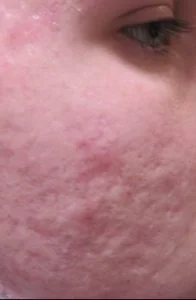
Case 3:
Case 4:
Complications of acne scar removal
Post-inflammatory hyperpigmentation
Post-inflammatory hyperpigmentation is the most common side effect of laser resurfacing for acne scar removal. Fortunately, in most cases, it settles without any further treatment. Using 4% hydroquinone cream can help speed up its resolution. The duration of hyperpigmentation usually depends on the aggressiveness of the laser resurfacing treatment, with more aggressive laser resurfacing resulting in hyperpigmentation of a longer duration. It is usual for PIH to last anywhere from 3 to 4 weeks up to 6 months, depending on the grade of hyperpigmentation. It is extremely important to avoid any sunlight exposure after having laser resurfacing as this is the most common cause of the development of post-inflammatory hyperpigmentation, and this is particularly important in the first 3 to 4 weeks after treatment.
Hypopigmentation
Hyperpigmentation or lightning of the skin compared with surrounding normal skin is relatively rare and affects less than 1% of patients who have had laser resurfacing for acne scar treatment. It is usually much more common for patients to develop a lighter skin complexion due to new and healthier skin formation. The cause of this appearance is the formation of more highly structured collagen that more efficiently reflects light, giving rise to the appearance of lighter skin.
Infection
Infection after laser resurfacing is a well-recognised potential complication. The risk of infection is more likely to occur in CO2 laser treatment or erbium laser treatment, especially when performed using more aggressive settings. Bacterial or fungal infection occurs in up to 5% of cases of laser resurfacing, and viral infection in the form of the cold sore virus can occur in up to 10% of all cases. It is important to recognise any potential infection early so it can be treated more effectively and without the risk of developing scarring. Your dermatologist will actively monitor you after treatment for this potential complication, and where infection is suspected, antibiotics will be prescribed. Most patients are prescribed antibiotics and antiviral prophylaxis as standard treatment after laser resurfacing, which helps minimise the risk of infection.
Scarring
Scarring is rare after laser resurfacing treatment; however, the most common cause is an infection not recognised early on. This risk can be controlled by regular proactive monitoring by your dermatologist, especially in the first week after treatment. Another potential cause is the laser being used at excessively high settings, leading to the formation of a thermal injury or laser burn. This cause is extremely unlikely in the hands of an expert laser dermatologist.
Prolonged redness
Prolonged redness is more of a side-effect to be expected rather than an actual complication, which may or may not occur following laser treatment for acne scars. It is easily concealed with foundation and make-up and always resolves fully. Some form of concealment can also be used in men. However, most men are generally less concerned about facial redness than women. Facial redness varies in duration and depends on the aggressiveness of the laser treatment performed for acne scar removal. However, CO2 laser treatment generally produces more facial redness than other laser treatments.
Contact dermatitis
Contact dermatitis refers to an increased skin sensitivity that develops after laser resurfacing to treat atrophied acne scars. In a small proportion of cases, the symptoms can be severe. Even a mild skin irritant can lead to significant itchiness and a burning sensation, resulting in prolonged facial redness and possible skin darkening or post-inflammatory hyperpigmentation. Contact dermatitis after laser resurfacing is effectively treated with a topical steroid cream and will eventually settle down on its own. It is essential to avoid common everyday precipitants of contact dermatitis by using cleansers that are perfume-free, and your dermatologist will be able to advise you on the correct products to use on your skin after acne scar treatment.
What happens at my acne scar removal consultation at Centre for Surgery?
You will be booked in to see one of our expert acne scar specialists at Centre for Surgery (95-97 Baker Street) in Marylebone for your consultation for acne scar treatment.
The dermatologist will perform a thorough clinical examination of your skin and will discuss several aspects with you:
– Treatment options based on the types of acne scars you have and what kind of results can be expected with the proposed treatment
– What the treatment involves, including how often to take medicines prescribed after an in-clinic treatment
– Review your medical history, including any medicines you may be taking
– Answer your questions about any aspect of the acne scar treatment
Patient journey summary:
– Arrange a consultation at our specialist clinic at 95-97 Baker Street, Marylebone, for a face-to-face consultation with an expert practitioner
– Commence a treatment or course of treatments based on your needs and preferences
– Arrange a follow-up appointment if required to be seen by your dermatologist to review the effectiveness of treatment
FAQs
-
How does acne scarring occur?Certain types of acne particularly nodulocystic acne have a tendency to result in the development of acne scars and this is exacerbated when treatment is started late or is ineffective in the active phase of acne inflammation. The underlying inflammation giving rise to nodule and cyst formation results in permanent damage to the collagen structural support of the skin and this often results in depressed or pitted acne scars also known as atrophic acne scarring. In a very small percentage of cases (less than 5%) acne scars are overly prominent also known as hypertrophic scars.
-
Why are laser resurfacing and RF micro needling the best treatments for acne scarring?Laser resurfacing utilising the latest hybrid fractional technology is one of the most effective treatments for all severities of acne scarring. Hybrid resurfacing involves both ablative and non-ablative resurfacing in the same treatment using a combination of ablative CO2 laser and non-ablative erbium glass laser. The CO2 laser is able to ablate the superficial components of acne scars including boxcar scars. The healing process after the application of CO2 laser leads to neocollagenesis and neoelastogenesis and subsequent scar remodelling.
Fractional RF microneedling or Morpheus8 is one of the latest treatments to be utilised successfully for the treatment of acne scars. RF microneedling is particularly suitable for the treatment of deeper and fibrotic acne scars which have proven resistant to treatment with other less powerful treatments available elsewhere.
Both hybrid fractional laser resurfacing and RF micro needling are high power energy-based devices which can only be used by highly experienced dermatologists and aesthetic practitioners. At Centre for Surgery only our expert practitioners are skilled enough to use these highly sophisticated systems for the effective treatment of acne scarring. -
Is it possible to have treatment for acne scarring if I currently have active acne?It is very important to achieve proper control of active acne before considering treatment for acne scarring. During active acne there is often a degree of inflammation and/or infection and this needs to be fully treated beforehand. Undertaking treatment for acne scarring during flareups of active acne could lead to the risk of cross infection to another part of the face.
At Centre for Surgery we will only treat patients who have acne-free skin before beginning treatment for acne scarring. -
How long does acne scar treatment take to carry out?Treatment for acne scarring depends on the area of the face to be treated and the specific type of treatment. Full field subcision involving the Taylor liberator technique and tumescent anaesthesia may take up to 2 hours to perform. Laser resurfacing and RF microneedling typically takes about one hour to perform excluding the prior application of topical anaesthetic.
-
What does acne scar treatment feel like?Our dermatologists use a combination of injected local anaesthesia often with oral sedation combined with the prior application of a topical anaesthetic cream for the more aggressive laser resurfacing treatments involving CO2 laser or erbium laser. This means you will be relaxed and drowsy but not asleep. Laser resurfacing using a combination of local anaesthetic and oral sedation has the advantage of not requiring a general anaesthetic or an overnight stay. The use of a general anaesthetic for laser resurfacing significantly increases the costs to the patient and with modern methods of local anaesthesia this outdated method is now unnecessary.
After having the laser resurfacing procedure it is common to feel a hot sensation similar to experiencing a sunburn but this resolves fully after 24 hours. It is common to experience a degree of bruising and swelling of the skin for up to 5 days after the surgery. Over the counter oral painkillers are very effective for the first three days after laser treatment. The skin oozing settles by roughly day four and is then followed by a shedding of the outer dead skin layers. The appearance of pink skin will then become apparent and many patients will often develop a mild degree of itching at this stage. The symptoms can be easily alleviated with antihistamine tablets and a medical grade skin cream which the doctor will prescribe for you at the end of the procedure. The overlying dead skin will have virtually disappeared by the end of day seven and the skin will now appear reddish or pink in colour. The facial redness will gradually settle down over the next 4 to 6 weeks. This facial redness can often be treated with either IPL or pulsed-dye laser to speed its resolution.
Patients may re-apply foundation or make up from day 12 after treatment. The redness should be disguised well subsequently. Your dermatologist will give you expert advice on the correct skincare products to use after laser resurfacing. -
Does treatment for acne scarring hurt?Acne scar treatment at Centre for Surgery is a very comfortable experience. Our practitioners will use a combination of topical anaesthetic and or injected local anaesthetic to make for a very comfortable procedure. We also have the option of using 50-50 mixture of nitrous oxide and oxygen to inhale during laser resurfacing or RF microneedling.
-
When will I see results of acne scar treatment?In virtually all cases it will be possible to see results of treatment often after the first session independent of the actual technique used. For best results it is advised to complete the full course of treatments for optimum results.
-
How long does to take for acne scars to be treated?The duration of treatment for acne scarring depends on the severity of the scarring and the treatment strategy used. More aggressive treatments may result in results appear in quicker but at the expense of a slightly longer downtime. Our expert dermatologists will be able to advise you of the correct treatment plan and its anticipated duration at your consultation in London.
-
Am I a suitable candidate for acne scar removal?If you are over 18 years old and have acne scars which you are wishing to treat, you will be considered a suitable candidate for this procedure.
You will need to have realistic expectations about what the procedure can achieve. In many cases, a number of different treatments will be needed to achieve the best results. -
Can I have laser resurfacing if I am taking Roccutane for acne? Roaccutane is a powerful retinoid taken orally and is used to treat the severe grades of active acne. Roaccutane is known to affect the healing capability of the skin in an adverse manner. Patients who have laser resurfacing treatment may have a higher risk of skin complications if they are on Roaccutane treatment.
Our policy at Centre for Surgery is for all patients to have stopped oral Roaccutane treatment for at least six months before having laser resurfacing. The use of retinoids such as Roaccutane also increases the risk of developing contact dermatitis and excessively sensitive skin after laser resurfacing. -
Will I need multiple acne scar treatments?This will depend on which treatment you undertook, how you responded to the first treatment and your desired results. Lighter treatments such as micro needling or chemical peels may need 3 to 4 sessions for optimal results. Fully ablative laser resurfacing often requires only one treatment for dramatic results in severe acne scarring.
For most treatments, you will generally require multiple treatments to achieve the best outcomes. -
How long will it take for my acne scars to disappear?At your initial consultation with a specialist dermatologist, the exact type of acne scarring will be determined. It is very important to first treat any active acne inflammation before undertaking treatment for acne scarring. Patients who have been on Roaccutane treatment will need to wait six months until they can have laser resurfacing for acne scars. It is generally accepted that acne scars do not completely disappear even following the most successful treatment.
It is realistic to expect an improvement of between 50 to 70% following laser resurfacing for acne scar removal. You can expect final results to appear approximately between 4 to 6 months after the final treatment. -
How much does acne scar removal cost?The cost of acne scar treatment starts from £800 for non-ablative laser resurfacing. Surgical subcision under local anaesthetic costs approximately £1500. Laser resurfacing involving CO2 laser or erbium laser starts from £2500. RF microneedling with Morpheus8 costs between £1500 and £2000.

